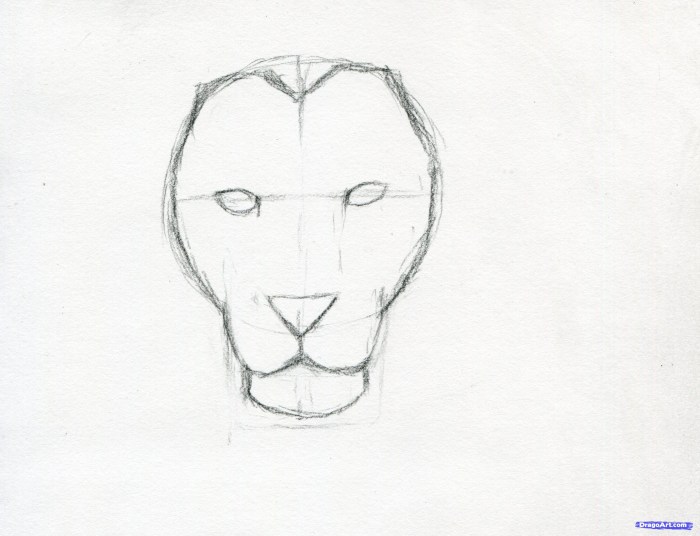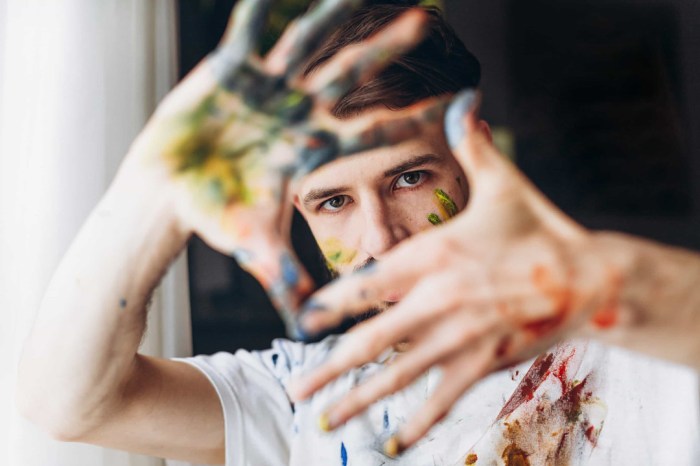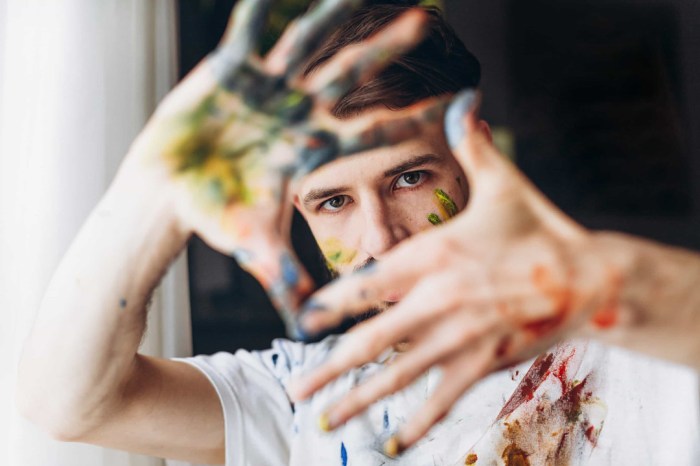Ready to ditch the boring doodles and create some seriously cool tattoo art? This guide is your ticket to mastering the art of tattoo sketching, taking you from basic lines to mind-blowing, unique designs. Whether you’re a total newbie or already have some drawing chops, we’re gonna break down the history, techniques, and creative tips you need to level up your tattoo game.
From the ancient origins of tattooing to the hottest modern styles, we’ll dive into the world of ink and needles. We’ll explore different techniques, from mastering linework and shading to blending colors like a pro. You’ll learn how to create your own killer designs, incorporating your personal style and meaning.
Get ready to unleash your inner artist and rock some seriously awesome tattoo art!
Understanding Tattoo Art

Tattoos have been a part of human culture for thousands of years, serving as a form of self-expression, social status, and spiritual connection. From ancient tribes to modern society, tattoos have evolved and adapted, reflecting the changing values and aesthetics of different cultures.
History and Cultural Significance
Tattoos have been found on mummies from ancient Egypt, dating back to 3000 BC, and on the bodies of Ötzi the Iceman, a 5,300-year-old mummy discovered in the Italian Alps. These early tattoos were likely used for ritualistic purposes, such as protection, healing, or marking social status.
In Polynesia, tattoos were an integral part of tribal culture, symbolizing lineage, status, and achievements. In Japan, tattoos, known as “irezumi,” were often used to depict mythical creatures, warriors, and landscapes, and were seen as a form of art and storytelling.
Tattoo Styles Throughout History
- Tribal Tattoos: These tattoos, originating from ancient cultures, are characterized by bold lines, geometric patterns, and symbolic imagery. Examples include Polynesian, Maori, and Native American tattoos.
- Japanese Tattoos: Irezumi tattoos are known for their intricate details, vibrant colors, and often depict mythical creatures, landscapes, and historical figures.
- Old School Tattoos: Popularized in the 1930s, these tattoos feature bold lines, bright colors, and traditional imagery such as anchors, hearts, and swallows.
- New School Tattoos: Developed in the 1980s, New School tattoos embrace a wider range of styles, including abstract designs, cartoon characters, and pop culture references.
- Realism Tattoos: These tattoos aim to create photorealistic images, capturing intricate details and textures.
- Blackwork Tattoos: This style focuses on using black ink to create intricate patterns and designs, often with a minimalist aesthetic.
Evolution of Tattooing Techniques and Tools
Early tattooing techniques involved using hand-tapped needles and ink made from natural ingredients like charcoal, soot, and plant pigments. The process was often painful and time-consuming. In the 19th century, the invention of the electric tattoo machine revolutionized the art form, making it faster, more precise, and less painful.
Modern tattoo machines use a coil system to drive a needle that punctures the skin and deposits ink.
Key Elements of Tattoo Design
- Linework: The foundation of a tattoo, linework defines the shape and form of the design.
- Shading: Used to create depth, dimension, and texture, shading techniques can range from subtle gradients to bold contrasts.
- Color Theory: The use of color in tattoos is crucial for creating a harmonious and visually appealing design. Understanding color theory, including color relationships, contrast, and harmony, helps tattoo artists create balanced and impactful designs.
Developing Your Tattoo Drawing Skills

Alright, you’ve got the basics down. Now it’s time to level up your tattoo drawing game! We’re gonna dive into some killer techniques that’ll take your sketches from “meh” to “holy smokes, that’s awesome!” Think of it like this: You’ve got the raw materials, now it’s time to build a masterpiece.
Mastering Lines, Curves, and Shapes
You can’t build a skyscraper without a solid foundation, and the same goes for tattoo art. Lines, curves, and shapes are the building blocks of every tattoo design. We’ll break down the fundamentals so you can create clean, confident lines that’ll make your designs pop.Think of lines as the foundation of your tattoo art.
Straight lines can create bold Artikels, while curved lines add flow and dynamism. Shapes, like circles, squares, and triangles, are the building blocks of more complex designs. Here’s a breakdown of how to practice and master these elements:* Practice lines:Start by drawing straight lines, focusing on maintaining consistency and smoothness.
Try drawing horizontal, vertical, and diagonal lines. Then, experiment with curved lines, like arcs and S-curves.
Explore shapes
Yo, wanna ink up your bod with some sick art? Learn to draw like a pro with this guide, it’s totally rad! Want to understand the philosophy behind your favorite artists? Check out Trumping Philosophy The Greatest Mind Explains the Greatest Minds – it’ll give you a whole new perspective.
Once you’ve mastered the art of drawing, you’ll be rockin’ your own masterpiece tattoos in no time!
Draw basic shapes like circles, squares, triangles, and more complex shapes like stars, hearts, and flowers. Practice filling these shapes with different patterns and textures.
Experiment with pressure
Varying the pressure of your pen or pencil creates different line weights, adding depth and dimension to your drawings.
Creating Textures and Patterns
Ready to add some texture and pattern to your designs? Think about how you can create depth and interest using pencils, pens, and markers.* Hatching:Use parallel lines to create different values and textures. Closely spaced lines create darker areas, while wider spacing creates lighter areas.
Wanna level up your art game and unleash your inner tattoo artist? “How to Draw Coolest Things Tattoos” is your jam! This guide’s got you covered with step-by-step instructions to sketch out unique styles, from classic to crazy. Need a little inspiration?
Check out Magic Jars A Coloring Book for Adults for some seriously cute and whimsical designs. After you’ve practiced your drawing skills, you’ll be ready to rock those tattoo ideas like a pro!
Cross-hatching
This technique uses intersecting lines to create depth and texture. By layering cross-hatched lines, you can build up darker values.
Stippling
This involves using tiny dots to create textures and shading. It can create a more subtle and delicate look.
Dotwork
This technique uses dots of varying sizes to create textures and patterns. It’s a versatile technique that can be used for both realistic and abstract designs.
Color Theory: A Rainbow of Possibilities
Now let’s unleash the power of color! Color theory is your secret weapon for creating vibrant and harmonious tattoo designs. * Primary colors:These are the building blocks of all other colors: red, yellow, and blue.
Secondary colors
Created by mixing two primary colors: green (blue + yellow), orange (red + yellow), and purple (red + blue).
Tertiary colors
Created by mixing a primary color with a neighboring secondary color, creating a wider range of hues.Understanding the color wheel is crucial for creating harmonious color palettes. Adjacent colors on the wheel create analogous color schemes, which are often used for subtle and calming designs.
Complementary colors, opposite each other on the wheel, create high contrast and visual impact.
Tattoo Drawing Tutorials for Beginners
Ready to dive into some awesome tutorials? Here are some killer resources to get you started:* Online platforms:YouTube, Skillshare, and Udemy offer tons of free and paid tutorials covering a wide range of tattoo drawing techniques.
Want to rock some sick ink but don’t know where to start? “How to Draw Coolest Things Tattoos Unleash Your Inner Artist and Learn to Sketching Body Art. Creative and Step-by-Step Guide to Drawing Unique Styles” is your go-to guide.
Practice your skills by coloring in some awesome mythical beasts with the Mythical Dragon Coloring Book Grayscale Coloring Book – Dragon Coloring Pages For Adults – Great for Relaxation and Stress Relief – it’s a chill way to get your creative juices flowing before you start designing those epic tattoos.
Soon you’ll be a tattoo artist with a killer portfolio, ready to unleash your artistic side on the world!
Tattoo artist websites
Many tattoo artists share their knowledge and skills through online tutorials and workshops. Check out their websites for valuable insights.
Books and magazines
There are plenty of resources available in print, including books and magazines dedicated to tattoo art and drawing.
Yo, wanna unleash your inner artist and rock some killer tattoo designs? This guide’s got you covered, from basic sketching to unique styles, so you can totally dominate the body art game. Want some sick beats to pump you up while you draw?
Download And Listen Here and get ready to create some seriously cool tattoos!
Creating Unique Tattoo Designs
So, you’ve got the basics down, you’re ready to rock the tattoo design world! But how do you make your work stand out from the crowd? It’s all about channeling your inner artist and finding your unique style. Think of it like crafting a masterpiece – you need to find your voice, your vibe, and your way of expressing yourself through ink.
Exploring Different Tattoo Design Concepts
Tattoo art is a vast and diverse world, with endless possibilities for expression. You can choose from a wide range of design concepts, each with its own unique aesthetic and appeal. Let’s explore some of the most popular styles:
- Realism:This style aims to create incredibly lifelike depictions of subjects, whether it’s a portrait, a landscape, or even a still life. Realism tattoos require a high level of skill and attention to detail. Imagine a tattoo of a hummingbird in flight, with every feather and wing beat captured with precision.
That’s the power of realism!
- Abstract:This style embraces freedom and fluidity, using lines, shapes, and colors to create a sense of movement and emotion. Abstract tattoos are often personal and symbolic, allowing the wearer to express their inner world through art. Think of a swirling, abstract design that captures the energy and chaos of a hurricane.
That’s the beauty of abstract art.
- Geometric:This style utilizes precise lines, angles, and shapes to create intricate and often symmetrical designs. Geometric tattoos are known for their clean lines and modern aesthetic. Imagine a tattoo of a mandala, with its complex geometric patterns and intricate details.
That’s the power of geometric art.
- Illustrative:This style blends elements of realism, cartooning, and graphic design to create bold and eye-catching images. Illustrative tattoos often have a playful and whimsical feel. Think of a tattoo of a playful cartoon character, with its bold lines and vibrant colors.
That’s the magic of illustrative art.
Examples of Unique and Innovative Tattoo Designs
The world of tattoo art is constantly evolving, with artists pushing boundaries and creating new and innovative designs. Here are some examples of unique and innovative tattoo designs that have captured the imagination of tattoo enthusiasts:
- Negative Space Tattoos:These designs use the surrounding skin as part of the image, creating a sense of depth and intrigue. Think of a tattoo of a bird in flight, with the bird’s Artikel created by the negative space around it.
It’s like a puzzle where the missing pieces are just as important as the ones that are present.
- Fine Line Tattoos:These designs use delicate lines and subtle shading to create minimalist and elegant tattoos. Think of a tattoo of a tiny flower, with its intricate details rendered in fine lines. It’s a delicate and understated beauty that speaks volumes.
- Dotwork Tattoos:These designs are created by meticulously placing dots of ink to create images and patterns. Dotwork tattoos can range from simple and minimalist to incredibly complex and detailed. Think of a tattoo of a portrait, where the image is built up from thousands of tiny dots.
It’s a testament to patience and precision.
Personalizing Tattoo Designs
The best tattoos are those that are deeply personal and meaningful to the wearer. They tell a story, reflect a passion, or commemorate a special moment in life. Here are some tips for personalizing your tattoo designs:
- Consider your personal style:What kind of art do you gravitate towards? What are your favorite colors, patterns, and themes? Your tattoo should reflect your unique personality and aesthetic.
- Choose a meaningful subject:What matters most to you? What are your passions, beliefs, and values? Your tattoo can be a powerful way to express your inner self.
- Collaborate with your artist:Talk to your artist about your ideas, your vision, and your expectations. A good artist will work with you to create a design that is both beautiful and meaningful.
Tattoo Sketches: A Showcase of Artistic Approaches
Here’s a series of tattoo sketches that illustrate different artistic approaches and concepts. Imagine these sketches coming to life as tattoos, each one a unique expression of the artist’s vision.
- Realism Sketch:Imagine a detailed portrait of a loved one, capturing their features with incredible precision. The lines are sharp, the shading is subtle, and the overall effect is lifelike. This sketch showcases the power of realism to create a lasting tribute.
- Abstract Sketch:Imagine a swirling, abstract design that evokes a sense of movement and emotion. Lines, shapes, and colors intertwine, creating a sense of fluidity and energy. This sketch represents the freedom and expression that abstract art allows.
- Geometric Sketch:Imagine an intricate mandala, with its symmetrical patterns and precise lines. The design is complex and detailed, showcasing the beauty of geometric art. This sketch demonstrates the power of geometry to create a visually stunning tattoo.
- Illustrative Sketch:Imagine a playful cartoon character, with its bold lines and vibrant colors. The design is whimsical and fun, capturing the essence of illustrative art. This sketch showcases the ability of illustrative art to create a lighthearted and engaging tattoo.
Book Review

So, you wanna learn how to draw tattoos? You’ve got the passion, you’ve got the drive, but you’re lookin’ for that extra somethin’ to push you over the edge, right? Well, let me tell you about this awesome book I just finished readin’.
It’s called “Tattoo Design: A Step-by-Step Guide to Creating Original Tattoo Art” by [Author Name]. This book is like a one-way ticket to the world of tattoo art, and let me tell you, it’s a wild ride.
Content and Writing Style
This book is like a masterclass in tattoo design, taking you from the basics of sketching to creating your own unique styles. The author, [Author Name], knows their stuff, and they break down every step in a way that’s easy to understand, even if you’re a complete beginner.
The writing style is super engaging and conversational, like you’re hangin’ out with a tattoo artist friend who’s givin’ you the inside scoop. It’s got that cool, laid-back vibe, but don’t let that fool you – this book is packed with tons of practical information and helpful tips.
Strengths and Weaknesses
This book is a real winner, but like everythin’ else, it ain’t perfect. Here’s the lowdown on what I loved and what could’ve been better:
Strengths
- The book’s got a really clear structure, takin’ you through the process step-by-step. It’s like a roadmap for your tattoo art journey.
- It’s got tons of illustrations and examples, which makes it super easy to follow along and visualize the techniques. It’s like havin’ a personal art teacher right there with you.
- The author doesn’t just tell you what to do, they explain the “why” behind each technique, which helps you understand the concepts better and apply them in your own work.
Weaknesses
- While the book covers a wide range of styles, it could’ve gone deeper into some of the more niche styles, like traditional Japanese or blackwork.
- The book could’ve included more information on the business side of tattoo art, like pricing, marketing, and building a clientele.
Comparison to Other Resources
This book is definitely a standout in the world of tattoo art resources. It’s a great starting point for beginners and a valuable resource for experienced artists lookin’ to expand their skills. Compared to other books on tattoo art, this one stands out because of its focus on practicality and its conversational tone.
It’s not just a dry textbook; it’s a real guide to help you unleash your inner artist.
Conclusive Thoughts

So, you’re ready to take your tattoo drawing skills to the next level? You’ve got the tools, the knowledge, and the inspiration – now it’s time to unleash your creativity and let your inner artist shine. From simple lines to complex designs, you’ve got the power to create unique and meaningful tattoo art that reflects your individuality.
So grab your pencils, pens, and markers, and let’s get drawing!
Questions and Answers
What are some essential supplies for tattoo drawing?
You’ll need pencils (different grades), pens (black and colored), markers, erasers, drawing paper, and a ruler. It’s also helpful to have a sketchbook for practicing and experimenting.
Is it hard to learn to draw tattoos?
Not at all! With practice and the right guidance, anyone can learn to draw tattoos. Start with basic shapes and lines, and gradually work your way up to more complex designs.
How can I find inspiration for tattoo designs?
Look at tattoo artists’ portfolios, browse online galleries, and check out books and magazines about tattoo art. You can also draw inspiration from nature, music, movies, and your own personal experiences.

